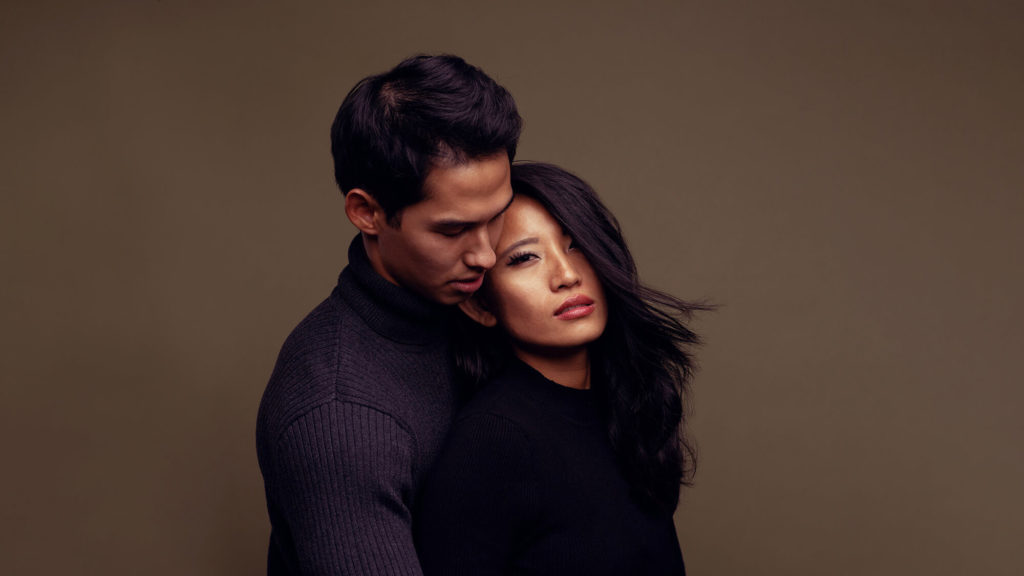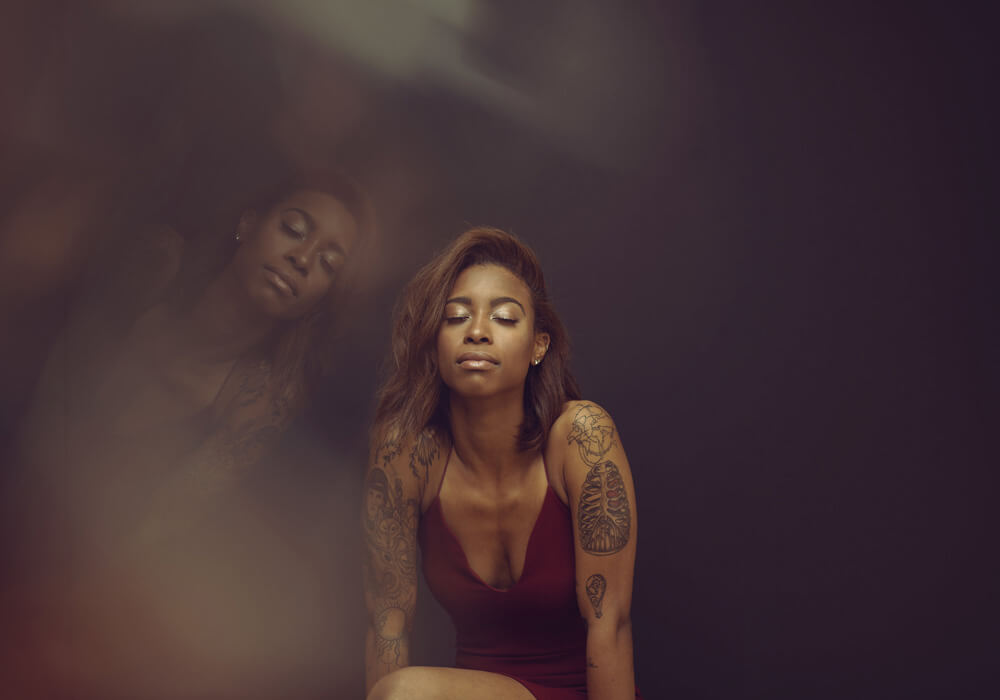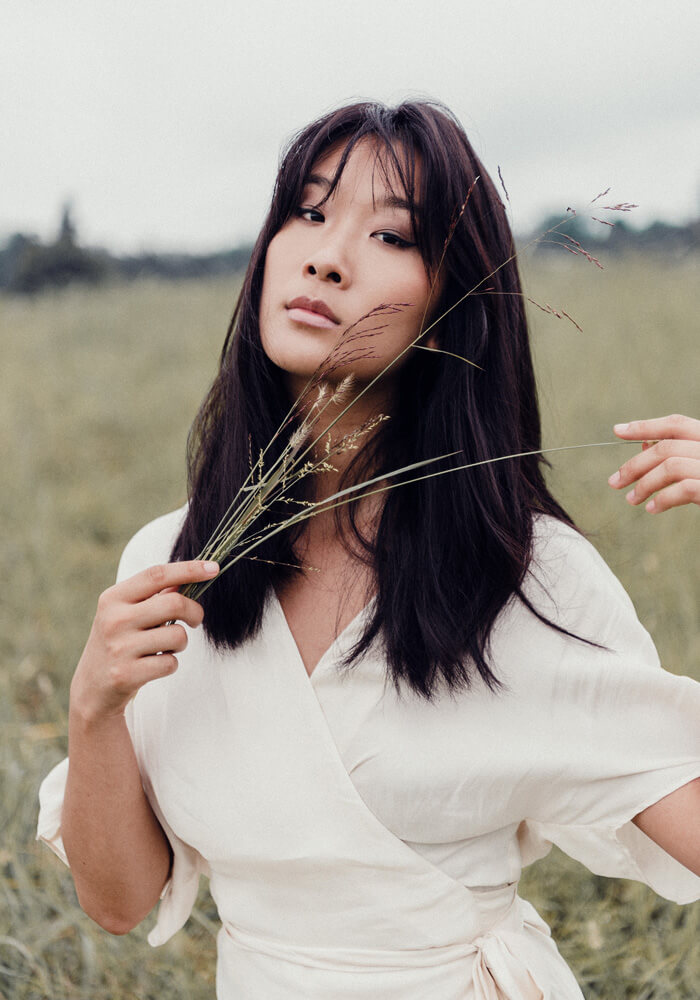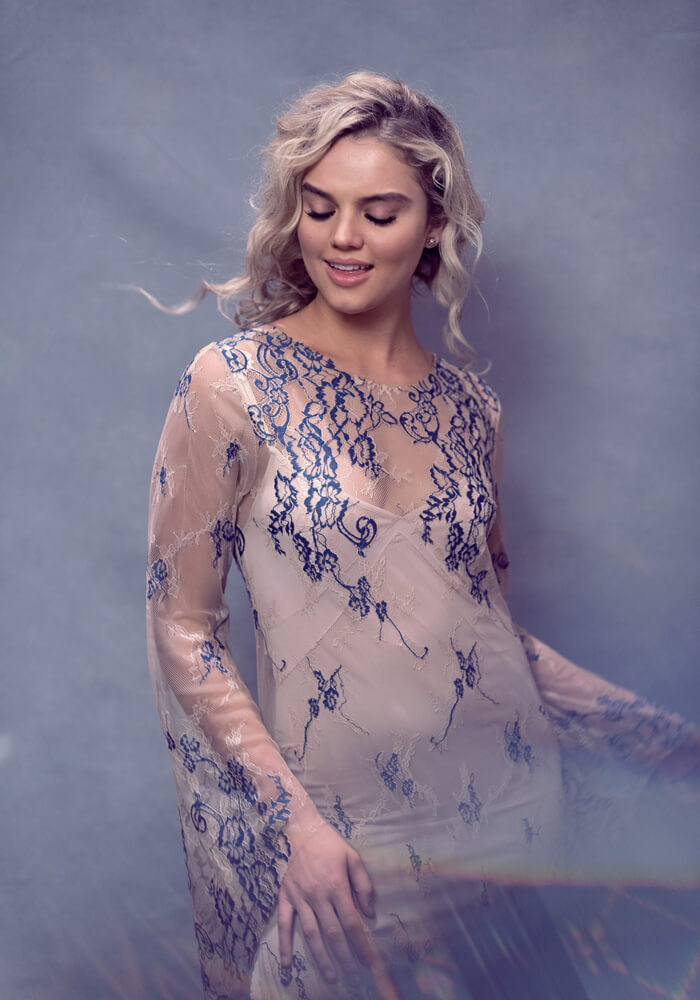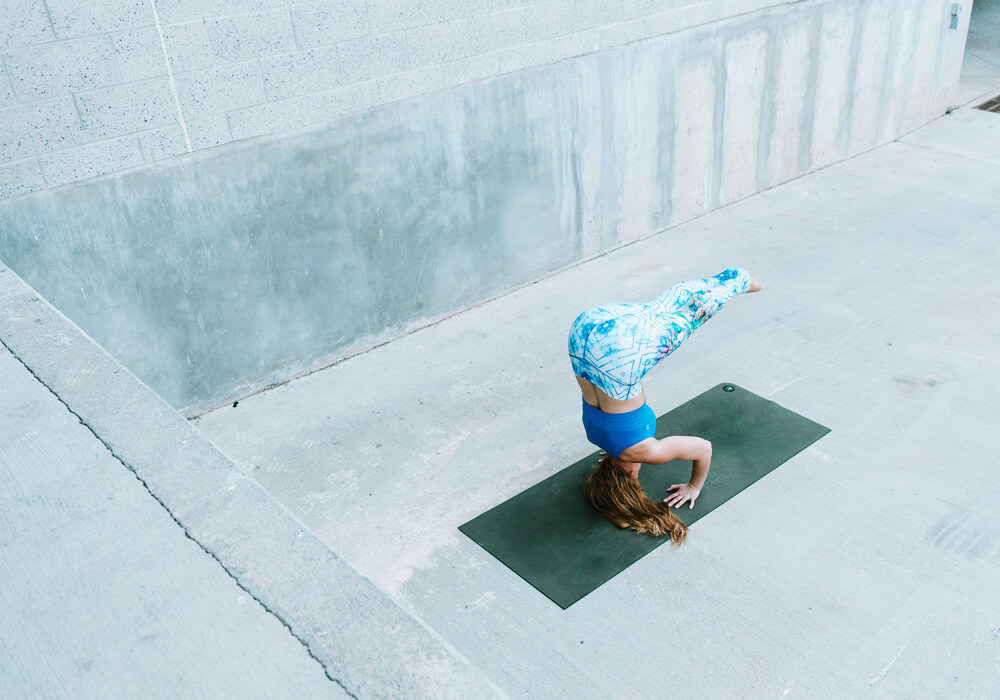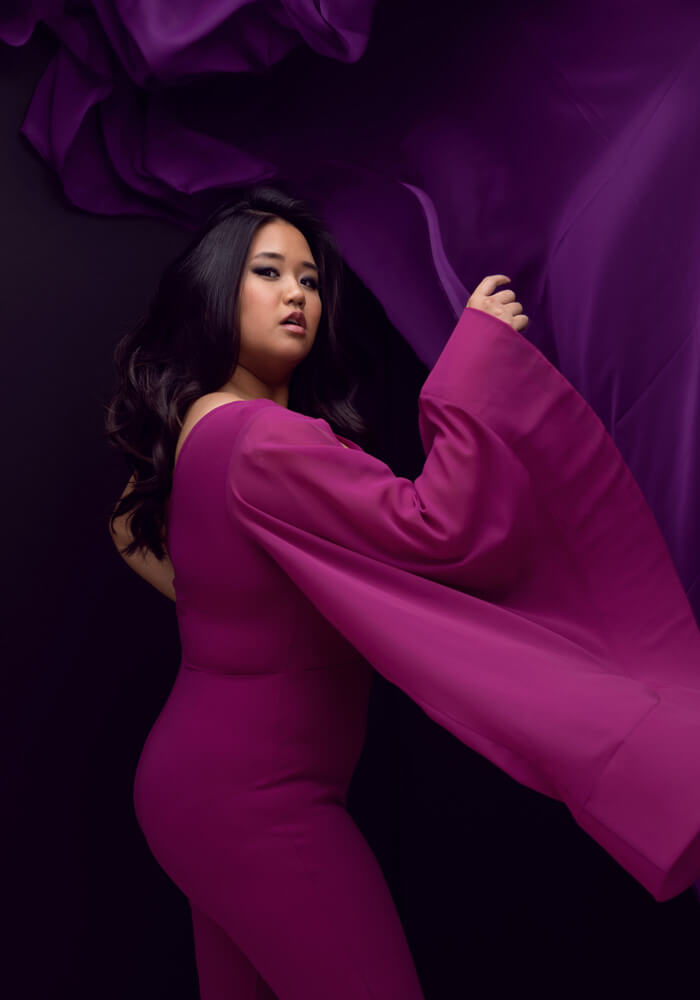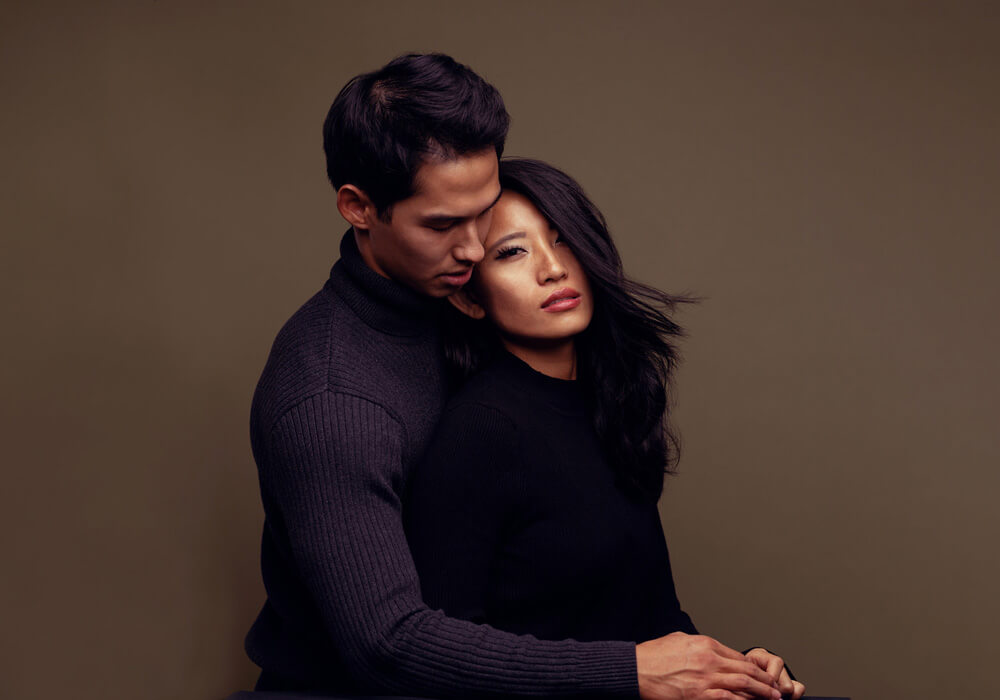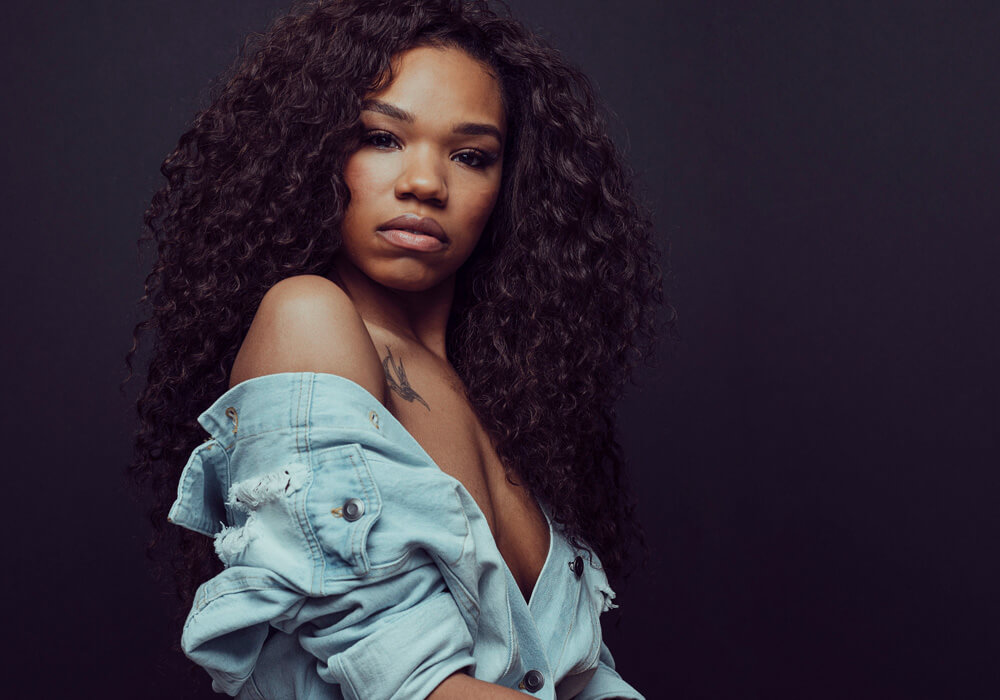Written by Casey Cosley and Pratik Naik
We’ve watched the work of Tina Leu for a while now. Her portrait work has been really captivating. I recently found her work on the Sue Bryce group and got to recently meet her in person at the Portrait Masters conference. There is something magical about her work and the essence of it. What I love most about her work is that she photographs a wide range of genres and still manages to maintain her style. We wanted to sit down and learn more about her work and her thoughts on color!
To start, your art is beautiful! We were struck by the diversity of your work and extremely impressed by your unique aesthetic which seems to harmoniously weave throughout all of the genres that you photograph. Is there a specific niche that you would consider a personal favorite, or one that you feel particularly drawn toward?
First, I want to thank you for having me for this interview and your observations of my work! Honestly, I’m still finding my voice through my passion. There are so many creative categories out there that it’s just as challenging as it is fun to focus on just one. However, recently, my journey has taken me to a place where I’m really enjoying portraiture and fitness lifestyle imagery. Although the styles are completely different, the approach is the same with capturing the person’s strength, both externally and internally. The reactions of those I photograph are equally similar as they’ve never seen images of themselves captured that way. It excites me knowing that I’m creating something that gives them more confidence.
One thing we love about your work is how you masterfully use color to create, define, and potentiate mood. How do you go about deciding upon creative direction, in the post-processing phase of your workflow?
It’s been a learning and discovery process to determine what moods I’m most attracted to. During the planning of a shoot, I’m more focused on location/setting, styling, and the needs of the client. The post-processing of color happens when I’ve narrowed down the images and play around with both cool and warm tones. Much of my work is influenced by the emotions that lie behind cool and warm gradients. Throughout the pre- and post-editing process, I search for the connection that feels best for the overall piece and the client’s needs. Once a color palette gives me that emotional response, I know what direction to take to create the best image.
In the beginning, a lot of my work leaned on the cooler side because I love the bright, modern, concrete, and urban aesthetic. As I’ve learned more about portraiture and the human side of photography, warmer tones have entered into my workflow based on how I interpret it. Come to think of it, the music I listen to while editing drives a lot of my post-processing decisions. Contemporary neo-classical/electronic music is my ultimate editing soundtrack. As I’m moving into the New Year, I’m completely inspired to create moods and personal work that evokes how I internally feel when listening to these piano-centric sounds. I suppose my workflow has just changed in this moment! Like I said, it’s been a learning and discovery process, which will never end.
As a photographer with a formal education in the craft, what are your thoughts regarding the traditional, University route versus going it alone and embarking on a self-taught journey?
My formal education as a Photography major consisted more of alternative processes and the darkroom. The projects centered all around creating artistic imagery, and the supplemental courses for a BA in the Arts included drawing, sculpture, and art history. I didn’t learn a lot about graphic design/Photoshop (it was only version “CS” at the time!) and studio lighting was just one course out of all my classes. All that being said, the formal education gave me a greater appreciation and understanding of all art forms and their history. Does it play a role in how I create? Unfortunately not as much as I’d like to admit. I worked in a corporate tech industry throughout school and after graduation, I continued to work full-time for the next ten years with just fun shoots with friends on rare occasion. That prolonged time away from the creative field caused me to forget some fundamentals of my craft.
Now that I’ve transitioned into a full-fledged Photographer and entrepreneur, I wish all that schooling taught me the business side of photography. There is an abundance of educational and tutorial content on the web that go over techniques and processes – way more than you’ll ever receive from a college degree and for a lot less money. What I do appreciate from my education are the professors/mentorship and the assignments and projects that helped stretch our minds and creativity. The critiques of the professors and your peers outside of the digital social media realm allowed you to give and hear constructive criticism. Something that is more lost than found in this current social media era, along with the inevitable feelings of comparison. Going on a self-taught journey is completely doable, respectable, and encouraged. Surround yourself with creatives and a network that embodies community over competition. You can undoubtedly make it happen in as less than two years with relentless drive and hunger to create. I’ve seen it happen, because, well, I’m living and loving it!
You’re incredible at engaging people in the social realm through Instagram Stories! Is that something you feel is an innate strength, or an aspect of yourself that you’ve developed and polished? Along those lines, do you have recommendations for those that may struggle to maintain an active social presence?
Instagram Stories is the best way for me to connect with my audience in an organic way. My feed is curated with my work and rarely has a photo of me in it (which will change come 2019). Stories allows me to share spontaneously about what I’m up to and behind-the-scenes of my shoots. Not only that, it’s something that I can do multiple times a day without having to worry about what my feed is going to look like. Folks are able to see me, hear me, and get to know me. I’ve gotten several requests from local photographers asking to meet up and share my knowledge, based on the snippets I share from my own journey. The business aspect is not as readily accessible as the creative side, especially finding other photographers who are willing to share that information. It was really tough finding my way and footing when I started my business. I contacted a lot of photographers in my area who operated their own studio to ask to meet, be mentored, and assist. Let’s just say, the opportunities were slim. At the end of the day, I understand that it’s a business, but I feel that there’s enough space for work and creativity for everyone to show their best ideas. I now make a point to share my lessons, processes, and thoughts openly on IG Stories to help and inspire at least one person.
As an avid social media participant, I feel it’s both an innate strength and a developed skill because I’ve always challenged myself to try the newest tech trend or way to reach an audience. It started with Snapchat, but then having to manage multiple social platforms became cumbersome until IG released the Stories feature. That feature allowed me to compartmentalize all of the various features from other social media platforms in to one medium. I immediately practiced posting frequently at its early stages and I’d be able to see everyone’s Stories within 10 minutes because folks weren’t quite sold on its existence in the first place. It was like that for several months compared to now… I don’t even know how long it would take for me to actually watch every single Story of those I follow!
For those looking to maintain an active social media presence, take it slowly and be patient with yourself and the process. If you don’t ever post, start with once or twice a week until you’re up to at least 5 times a week. Share what’s comfortable and easy for you to talk about. When you’re on a shoot, get an assistant or makeup artist to take some BTS shots and save boomerangs/videos of you working that you can post later. If you don’t have someone else, do it yourself. Everyone loves anything to do with behind-the-scenes, whether you’re editing, setting up lighting, meeting a client, going through your planning process, location scouting, what your client experience is like, etc. The important thing is to show up consistently for viewers to see and interact with you so your posts continue to show up on their screens. Set a calendar reminder or use social planning apps if you have to. Have fun with it and don’t overthink it.
Clearly, and for very compelling reasons, you are a champion for printing rather than settling for digital display. Do you approach color grading differently, when editing an image for print versus digital usage? Why is printing so important to you?
I do not approach color grading differently for print because there hasn’t been an issue of discrepancy between what’s printed and what’s on screen, besides ensuring that the shadows are lifted more for print. It’s significant to me because printing almost gives me the feeling of being back in the darkroom. It provides me with a sense of appreciation of all the work that went into creating that image. There’s a process and end result that can be held and observed one by one, different from digital hard drives of images stored and forgotten.
Originally, I grew up in Germany and am adopted. Thankfully I still have contact with my birth family, and what I cherish most are the physical prints and albums filled with images from my childhood. Call me old school, but seeing the corners of the images fade and fray over time makes them all the more valuable. Being able to see my mother and grandmother at my age, my brother who I just recently reconnected with, all those images are priceless. There’s only one image of each – no copies. It makes you cherish them so much more. Print is permanent and digital is fleeting in the sense of photography. We now easily take thousands of images on our cameras within days and hardly even go back to look at them. This isn’t just about portraits, travel photography applies as well! These epic trips you took and the adventures and scenes you captured along the way, should be celebrated and printed as well – not just stuck on a Facebook album.
As a user of the Infinite Color Panel, we’re curious to know how the Panel has influenced your artistic relationship with, and workflow related to, color?
2 words: endless opportunities. Color theory is still something I’m learning, and ICP has made the process so much easier and fun. Every single layer can be adjusted to my liking and I can stack additional ICP layers on top of one another to customize it even more. My workflow has both sped up and slowed down! It’s intensified because I can go through a variety of looks more quickly than before. Conversely, it’s slowed down BECAUSE I can go through so many looks quickly, I end up creating endlessly and going back and forth to compare (if time allows). It’s given me a more sophisticated color palette that I otherwise wouldn’t have known how to develop on my own.
What is your favorite aspect or facet of the Infinite Color Panel? Do you have any advice for individuals that may be new to the Panel, as far as getting started or exploring features?
Being able to turn on/off certain adjustment layers and the fact that it creates a neat group of adjustments in the History tab, without clogging it up with individual steps. It allows me to quickly go back a few creations to compare. Most of all, I love that it’s so versatile. I’ve tried it on my portraits, beauty work, fitness looks, and my travel landscapes – all have resulted beautifully! Other color grading tools either favor landscapes or people, but ICP performs flawlessly on all and results are professional-grade.
For those new to the panel, big CONGRATS and welcome! You’ve made a fine choice. Other than checking out how each intensity level affects your image, play around with opacity and turning on/off individual adjustment layers. You may be surprised how just turning 1 off, can really make your image.
Be sure to follow Tina’s work on Instagram and her Website!
Have you tried the panel yet? We’d love to see your creations! Get in touch on Instagram @infinitecolorpanel or the Facebook Infinite Color Panel group and show us your work.
If you haven’t tried the panel yet, get started here: https://infinite-tools.com/infinite-color-plugin/

